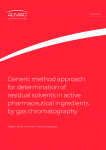Revolutionary Alzheimer's drug donanemab approved – what does this mean for the future of care?

At the Alzheimer's Association International Conference, experts from the Emmes Group discussed the impact of this new therapy on the future of Alzheimer's drug development, the importance of early detection, and innovative strategies for clinical trials. So, what donanemab's approval means for the Alzheimer’s treatment landscape?
The approval of donanemab is a game-changer in the world of Alzheimer’s treatment, sparking a lot of excitement at this year’s Alzheimer's Association International Conference. This breakthrough promises to transform how we approach Alzheimer's care and opens up new avenues for research. To dig deeper into what this means for patients and the industry, OSP caught up with Steffanie Wilson, vice president of neuroscience, and Courtney Nelson-Douthit, associate director of global project management at the Emmes Group. They shared their thoughts on how donanemab might reshape the future of Alzheimer’s treatment, the significance of early detection, and the impact on ongoing research.
With donanemab’s approval, what do you think the future holds for Alzheimer’s drug development?
The future looks incredibly bright for Alzheimer’s drug development. Donanemab’s approval continues the trend of the emergence of promising disease-modifying therapies that will be a game changer for Alzheimer’s. Since Donanemab works best when taken early in the disease stage, a big focus moving forward will be on early detection—spotting the disease before significant cognitive decline sets in. This means primary care doctors will need to be sharp about recognizing early signs of cognitive issues, which can be subtle and easily missed.
We’re also seeing exciting advancements in technology. Virtual cognitive assessments and wearable devices are on the horizon, making it easier for people to keep an eye on their cognitive health from home. Virtual tests offer a convenient way for people to check their cognitive functions without needing to visit a clinic. Wearable tech like fitness trackers and smartwatches can continuously monitor health metrics and detect subtle changes that might signal early Alzheimer’s. For instance, changes in physical activity or sleep patterns could hint at cognitive decline. This helps in timely recruitment for trials and reduces the need for frequent clinic visits, making participation easier for patients. The market is becoming quite crowded with emerging technology in this space, and the companies that can implement really robust validation strategies will ultimately be the most successful.
The focus on early detection also presents a need for lower cost, less invasive biomarkers that can eventually be deployed widely in clinical practice. By using biomarkers, researchers can tailor treatments to an individual’s specific disease profile. Much attention over the last several years has been paid to the use of neuroimaging and cerebrospinal fluid (CSF)-based biomarkers focusing on amyloid, tau, and neurodegeneration.
However, there has been significant recent activity in the development of diagnostic biomarkers in Alzheimer’s and related dementias, which is reflected in the recently published National Institute on Aging – Alzheimer’s Association work group updated criteria for diagnosis and staging of Alzheimer’s disease. These updated criteria highlight the development of blood-based biomarkers which could be more widely accessible than imaging or CSF markers. The revised criteria also aim to connect the research-based criteria for defining and categorizing Alzheimer’s with that of what happens day-to-day in clinical practice. Ultimately this focus on biomarkers presents the opportunity not only to enhance treatment effectiveness but also target the disease more precisely.
How does early detection fit with the effectiveness of treatments like donanemab, and why is it so important?
Early detection of Alzheimer's is crucial for several reasons, particularly in the context of treatments like donanemab. Alzheimer’s disease progresses through several stages, starting from cognitively unimpaired to mild cognitive impairment, and finally to more severe stages.
The primary reason early detection is so important is that it allows for intervention before significant neuronal damage and cognitive decline occur. Amyloid plaques and tau tangles, which are hallmark features of Alzheimer's, start to accumulate years before clinical symptoms become apparent. By identifying and treating the disease at this preclinical or early symptomatic stage, we can slow down the progression and potentially prevent severe cognitive impairment.
Furthermore, early diagnosis facilitates more personalized treatment plans. By understanding the specific pathological changes occurring in a patient's brain, clinicians can tailor therapies to target those changes more effectively. This personalized approach can improve treatment outcomes and enhance the quality of life for patients.
From a clinical trial perspective, early detection is also critical. It allows for the recruitment of patients who are more likely to benefit from the therapy, thus increasing the chances of demonstrating the drug’s efficacy. Moreover, early-stage patients provide valuable data on the disease's progression and response to treatment, which is essential for refining therapeutic approaches and developing new drugs.
Assessing subtle cognitive changes in early Alzheimer’s stages is complex due to the disease’s progression. Established outcome measures like the Mini-Mental State Exam (MMSE) and Montreal Cognitive Assessment (MoCA) are useful but may not capture early, subtle changes effectively. Composite outcomes like the ADCOMS and the Integrated Alzheimer’s Disease Rating Scale (iADRS) that combine individual scales and contain both cognitive and functional components can lead to increased efficiency and present a promising direction for detection of subtle changes in early stages but can also present challenges with regard to interpretability. This is an area where additional work is needed.
What strategies can improve patient recruitment for trials, especially when early-stage patients are hard to find?
Recruiting patients for Alzheimer's clinical trials, particularly those in the early stages, presents significant challenges. One of the main difficulties is that early-stage patients often have subtle or no noticeable symptoms, making it hard to identify and diagnose them. Additionally, the biomarkers that are now widely used in a research setting are not widely available in clinical practice. Despite these limitations, several strategies can enhance recruitment efforts.
Firstly, increasing awareness and education among primary care physicians and memory clinics about the importance of early detection and the availability of clinical trials is crucial. Physicians are often the first point of contact for patients, and their involvement in the recruitment process can significantly boost patient enrollment.
Building robust referral pathways is another effective strategy. Establishing collaborations with healthcare providers, memory clinics, and Alzheimer’s organizations can create a network that facilitates patient referrals to clinical trials. Community outreach programs that offer free cognitive screenings can also help identify potential participants.
Digital tools and platforms play a vital role in modern recruitment strategies. Online platforms like TrialMatch and the Alzheimer’s Prevention Trial Web Study are designed to match patients with suitable trials based on their risk profiles and assessments. These platforms streamline the recruitment process by making it easier for patients and caregivers to find and enroll in relevant studies.
Additionally, leveraging digital health technologies such as wearable devices and mobile applications can aid in identifying early cognitive changes in a non-invasive manner. These technologies can monitor patients' cognitive functions and behaviors over time, alerting researchers to potential candidates for trials.
Finally, addressing the logistical and financial barriers that patients may face is essential. Providing transportation, offering flexible scheduling, and covering trial-related expenses can remove significant obstacles to participation, making it more feasible for patients to enroll and remain in studies.
Donanemab trials showed it’s more effective in patients with milder symptoms. However, PET scans for detection aren’t always available or covered by insurance. What other markers could help with more convenient and accurate disease progression assessment?
PET scans are great for detecting amyloid plaques and tau tangles, but they come with practical issues—cost, availability, and insurance coverage. That’s why finding alternative biomarkers is crucial.
Blood-based biomarkers, like plasma p-tau 217, are a promising solution, and earlier this year FDA granted breakthrough device designation to Roche and Eli Lilly’s assay. They can detect Alzheimer’s indicators in a less invasive and more affordable way than PET scans and CSF biomarkers. Emerging methods like retinal imaging and saliva tests could make early detection even simpler and more accessible. The goal is to create a range of reliable, non-invasive diagnostic tools that can be easily integrated into routine clinical practice, making early detection and monitoring more feasible for a broader patient population.
What are the main challenges in evaluation of new Alzheimer’s treatments, and how can we address them?
Long-term evaluation of Alzheimer’s treatments faces hurdles like monitoring costs and variability in patient responses. PET scans, for instance, are expensive and not routinely used. To overcome this, researchers should explore alternative monitoring methods and utilize real-world data from electronic health records and wearable devices.
Another challenge is the variability in disease progression. Developing sensitive biomarkers that accurately reflect disease changes is key. Ensuring these biomarkers are validated across diverse populations can help standardize outcome measures.
Patient adherence to long-term treatments is also crucial. Simplifying treatment protocols and offering support services can improve adherence. Lastly, addressing regulatory and reimbursement issues is essential for widespread treatment adoption. Advocacy, collaboration with regulatory bodies, and demonstrating cost-effectiveness are important steps in this process.





























